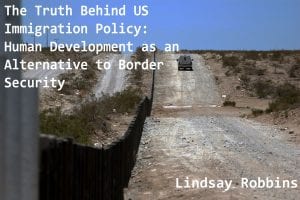Volume LII– Number 2
Lindsay Robbins
Abstract: In the current American political climate, immigration is a highly contentious issue. As immigration from Central America’s Northern Triangle (El Salvador, Guatemala, and Honduras) increases, the Trump Administration has enacted harsher immigration laws and revamped border security in an attempt to discourage migrants from journeying to the U.S. Historically, U.S. military and economic interventions helped create environments in the region that foster violence and encourage migration. Moreover, the policies adopted by the U.S. following its involvement in Central America have done little to decrease the number of immigrants arriving at the border. Based on historical precedent, increased border security and harsher immigration policies will not successfully decrease the number of immigrants attempting to cross into the U.S. today. Utilizing various case studies concerning U.S.-Latin American relations, this analysis will illustrate the influence that the U.S. had in creating unstable environments in Central America, as well as highlight how socio-economic factors play a much larger role in influencing one’s decision to migrate rather than the threat of apprehension at the border. The U.S., therefore, must invest in sustainable development programs that expand human capital if it hopes to more permanently reduce the number of immigrants arriving at the southern border.
Keywords: Immigration, Border Control, Central America, Economic Development, Human Capital
About the Author: Lindsay M. Robbins has a B.A. in International Studies from Towson University. She plans to begin studying for a Master’s degree in International Development in Fall 2019




You must be logged in to post a comment.